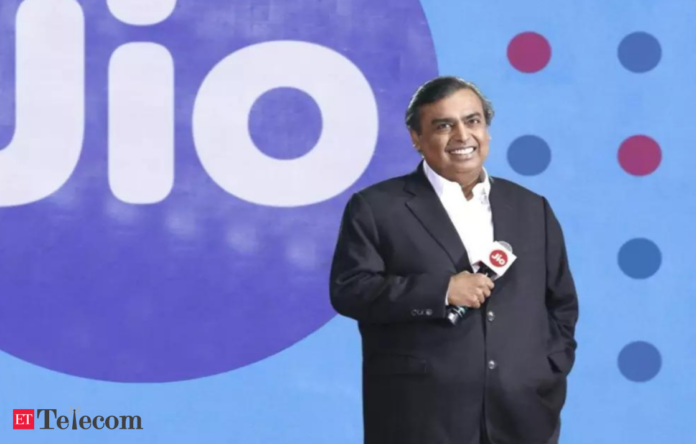In Short:
5G was launched in India with excitement, promising faster speeds and better connectivity. However, two years later, the hype has faded. Customers aren’t experiencing significant advantages, as 5G is mainly offered in select plans without monetisation. Operators struggle to find viable commercial use cases. Despite high speeds, there’s little incentive for customers to pay more when 4G meets most needs easily.

5G Technology was initially heralded for its promises of gigabit speeds, enhanced capacity, superior coverage, and sustainability features, along with its potential to connect the burgeoning Internet of Things (IoT). When introduced at the India Mobile Congress (IMC) in October 2022, user anticipation was palpable as many embraced the opportunity to experience firsthand the capabilities of this revolutionary technology.
Current Reality
However, as we approach IMC 2024 and conclude 2024 itself, the initial excitement surrounding 5G has diminished significantly. Users now report a lack of novel experiences beyond the initial speed test triumphs. Currently, Airtel and Jio offer 5G as a complimentary service on select prepaid plans and all postpaid plans, yet this initiative lacks a monetisation strategy. Furthermore, many users are expressing frustrations even in accessing reliable 4G services.
Challenges in Monetising 5G
A recent report indicates that several operators have slowed their 5G rollouts, pinpointing monetisation challenges as a primary concern. Essentially, there seems to be a void in commercial use cases for operators to capitalise on 5G infrastructure. Once complimentary 5G data phases out and is bundled within plans, user engagement may shift away from mere speed tests to more substantial data consumption, negating the thrill of rapid speed checks.
Required 4G Upgrade
It is vital to acknowledge that operators faced similar hurdles in monetising 4G. Nonetheless, 4G was a comprehensive upgrade that ensured enhanced speed and HD voice quality through VoLTE, representing a necessary technological progression. Operators, possibly keen to stay aligned with rapid technological advancements, rushed into 5G upgrades without clearly defined commercial objectives—a trend that continues to be evident today.
Despite assertions that 5G holds significantly greater capacity than 4G, users are still reporting unsatisfactory speeds even on 5G networks. To dissect the monetisation prospects of 5G and beyond, it is pivotal to remember that technology groups are actively innovating towards a 6G framework, framing the future landscape of connectivity.
What’s Different with 5G?
A fundamental question arises: what distinct advantages does 5G present over 4G? While technology vendors may tout advanced specifications, network operators seem to grapple with defining practical use cases that can be commercialised effectively. This disjunction poses a significant barrier to broader adoption.
Comparing Use Cases to Human Senses
When examining technology use cases, parallels can be drawn with human senses. Currently, primary digital interactions are limited to sight (video and images), hearing (audio), and to a lesser extent, touch through touchscreen functionality. High-speed connectivity predominantly enhances video streaming, where requirements for resolutions like 4K and 8K have clear thresholds. For instance, streaming UHD content on platforms like Netflix necessitates a stable connection above 15 Mbps.
Video and Audio Streaming
Despite the availability of 5G gigabit speeds, existing online activities typically do not demand this level of bandwidth. As HD voice and unlimited data options are now commonplace at minimal prices, it becomes increasingly difficult for Communication Service Providers (CSPs) to justify introducing tiered pricing for features that customers have come to regard as standard.
Other Use Cases
When addressing basic internet browsing, it’s evident that minimal data is consumed, thus presenting challenges in monetisation. Other potential applications such as IoT, Virtual Reality (VR), Augmented Reality (AR), and network slicing, while touted as advanced applications for 5G, may not significantly shift revenue streams.
Network Slicing
Network slicing promises optimisation tailored to specific application requirements. For example, segments could cater to low-latency applications like autonomous vehicles or high-throughput scenarios like video streaming. However, this approach begins to resemble a sub-service layer atop 5G, complicating monetisation perspectives.
Slicing Monetisation Implications
Some major Indian telcos have initiated Fixed Wireless Services (FWA) using network slicing technology, yet differentiated pricing structures remain elusive, further complicating monetisation discussions.
VR, AR, and Holographic Calls
Despite the growth of VR and AR markets, the high adoption rates indicate that these technologies do not necessitate speeds surpassing 100 Mbps for optimal functioning. While holographic communication represents an exciting frontier, widespread application in corporate settings may encounter challenges related to privacy concerns.
6G Framework Roadmap
The International Telecommunication Union (ITU) unveiled a 6G development framework in December last year to establish globally accepted standards for the sixth generation, identifying essential capabilities that build upon existing 5G structures.
Conclusion
In conclusion, given the current landscape of known use cases and limited technological applications, the prospect for monetisation within 5G appears minimal for telecom operators. Even with enhanced speeds, no compelling service exists that justifies the necessity of giga-capacity for individual smartphone users. Cumulatively, the saturation of established services alongside competitive pricing structures hinders further monetisation opportunities across generations. Future innovations may perhaps integrate trends like sustainability or artificial intelligence, yet the scope for generating substantial revenue from these advancements seems increasingly constrained.





